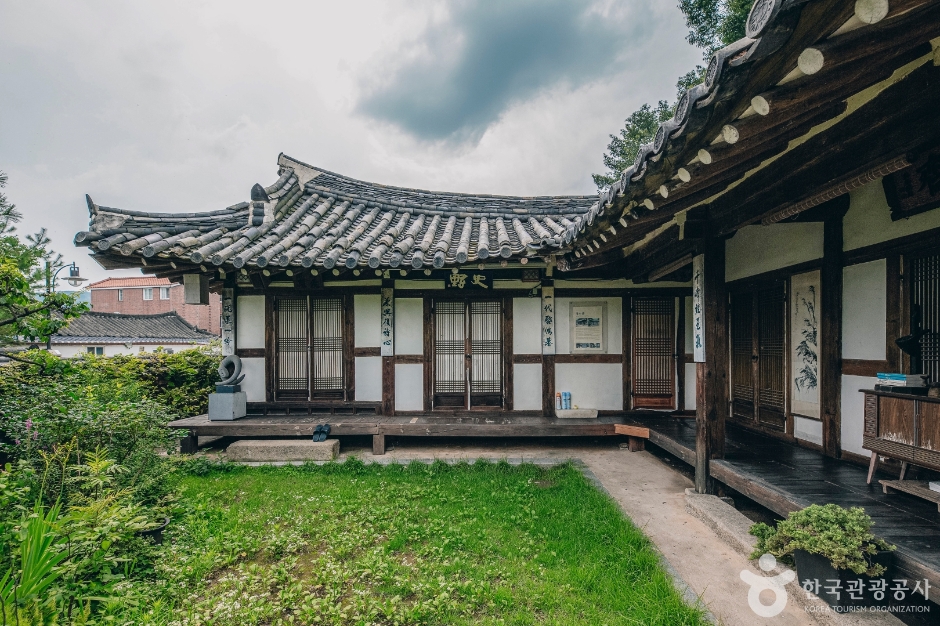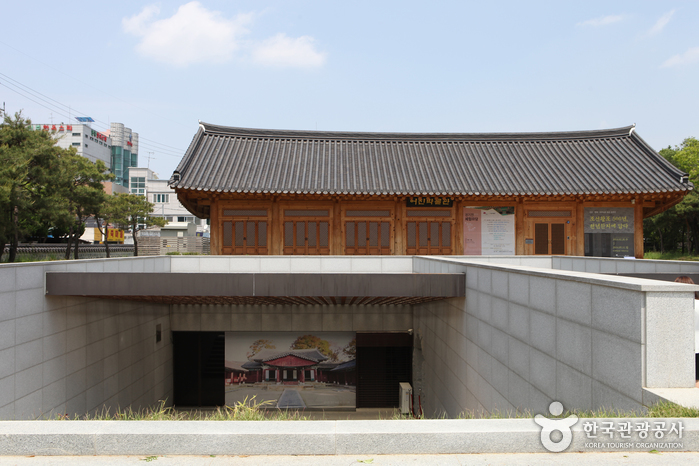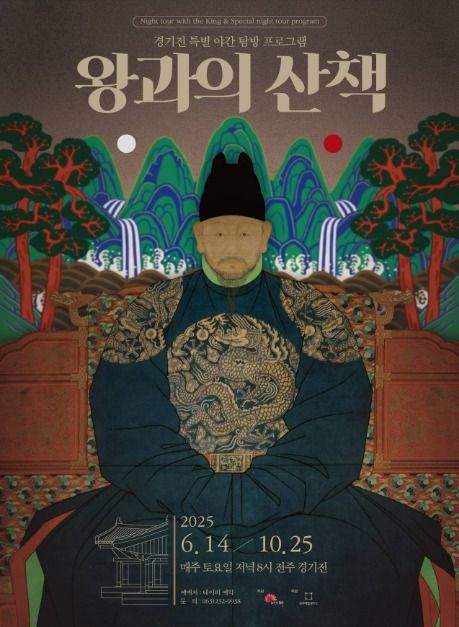Pabellón Hanbyeokdang (한벽당)
2.6Km 2024-10-15
Girin-daero 2, Wansan-gu, Jeonju-si, Jeonbuk-do.
Ubicado en la ciudad de Jeonju de la provincia de Jeollabuk-do, el pabellón Hanbyeokdang ha sido designado Propiedad Cultural Tangible Nº 15. En 1404, un funcionario civil de la dinastía Joseon fundó esta estructura para su quinta. Hanbyeokdang se estableció al pie del monte Seungamsan con hermosos paisajes del río Jeonjucheon. En el pasado, muchos escritores buscaban este lugar para inspirarse sobre sus obras. El pabellón es famoso por la belleza del paisaje de nieblas en las montañas, haciéndolo uno de los ocho paisajes más famosos de Jeonju.
Túnel Hanbyeok (한벽터널)
2.6Km 2024-04-06
Gyo-dong San 7-3, Wansan-gu, Jeonju-si, Jeonbuk-do
Omokdae e Imokdae (오목대와 이목대)
2.6Km 2025-07-10
Girin-daero 55, Wansan-gu, Jeonju-si, Jeonbuk-do.
Omokdae está situado en la cima de una colina y se trata de uno de los lugares donde Yi Seong-gye (quien se convirtiera más tarde en el rey Taejo, el primero de la dinastía Joseon) hizo una parada para celebrar su victoria de camino a casa tras la guerra contra los invasores japoneses, al final de la era Goryeo. Enfrente de Omokdae está Imokdae, situado cerca de los pies del monte Seungamsan, donde se encuentra Chimyeongjasan, un monumento católico. En este lugar, Mokjo (antepasado del rey Taejo) solía jugar con sus amigos a representar guerras de niño, una acción muy simple que aparecería después en 'Yongbieocheonga', una balada del siglo XV que narra los logros culturales de la nación.
Jeonju Waengi Kongmulgukbap Specialty Restaurant (전주 왱이콩나물국밥전문점)
2.6Km 2025-07-14
88, Dongmun-gil, Wansan-gu, Jeonju-si, Jeonbuk-do
Siwon (시원)
2.6Km 2025-07-18
45-41, Omokdae-gil, Wansan-gu, Jeonju-si, Jeonbuk-do
Siwon is a timber and clay-built hanok stay, part of Jeonju Hanok Village in Jeonbuk-do. It has four guestrooms, all but one with a small attic - so guests can have fun climbing up and down the ladder! The rooms have all been insulated and draft-proofed to keep visitors warm and comfortable. In the yard is a small garden and swing, and guests can play traditional games such as Tuho and Jegichagi - or even take part in a carpentry workshop. Must-see sites such as Gyeonggijeon, Jeondong Cathedral, Omokdae, and Nambu Market can all be reached on foot.
2521 (이오이일)
2.7Km 2025-07-17
5-19, Omokdae-gil, Wansan-gu, Jeonju-si, Jeonbuk-do
Escuela Confuciana Jeonju Hyanggyo (전주향교)
2.7Km 2025-07-09
Hyanggyo-gil 139, Wansan-gu, Jeonju-si, Jeonbuk-do.
Es una escuela confuciana que fue fundada en la dinastía de Joseon (1392-1910) y fue designada como Tesoro Histórico. Fue un establecimiento educativo del período de Joseon que estuvo originariamente ubicado en el sitio del santuario Gyeonggijeon, pero fue relocalizado en este lugar en 1603. Las tablillas mortuorias de 7 eruditos confucianos chinos y los 18 eruditos coreanos están conservadas en el edificio principal llamado Daeseongjeon.
Yangsajae (문화공간 양사재)
2.7Km 2025-11-28
40, Omokdae-gil, Wansan-gu, Jeonju-si, Jeonbuk-do
Museo de Retratos Reales (어진박물관)
2.7Km 2024-04-07
Taejo-ro 44, Wansan-gu, Jeonju-si, Jeonbuk-do.
Este museo se encuentra dentro del santuario Gyeonggijeon, en Jeonju, y alberga los retratos de antiguos reyes del período Joseon. Entre ellos, el del fundador de la dinastía, el rey Taejo (Lee Seonggye).
Paseo con el Rey por el Santuario Gyeonggijeon (경기전 왕과의 산책)
2.7Km 2025-10-30
Taejo-ro 44, Wansan-gu, Jeonju-si, Jeonbuk-do
+82-63-232-9938
Se realiza el “Paseo con el Rey” todos los sábados en Jeonju. El recorrido de 100 personas incluye una vista especial del santuario Gyeonggijeon con música y té. Un guía turístico le llevará por la hermosa ciudad de Jeonju.









 Español
Español
 한국어
한국어 English
English 日本語
日本語 中文(简体)
中文(简体) Deutsch
Deutsch Français
Français Русский
Русский